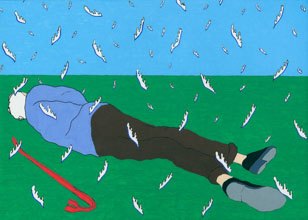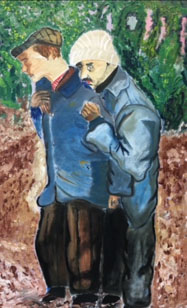Fine Art
For an artist, the exhibition marks a boundary for which there is a clear before and a clear after. When the artist’s work is exhibited, announced, and published spatially, the work also enters history. In the same moment that the art is exhibited, it becomes fixed in a point in time, but it also looks toward the future. For the person who produces the work, the artist, the exhibition is a kind of goal for their art, yet it also marks the end of a process. Maybe this is one of the reasons that the exhibition has such an attraction. It is a sort of portal between different states that we, on the one hand, can call the doing and on the other, the criticism, between the affective and the rational. Perhaps this is why the exhibition, just as often as it is an opportunity, also poses a problem.
With the establishment of the Enlightenment in Europe, the exhibition came to play a key role in how the world would be defined. The cosmology of reason can be said to need a room in which things could be placed and by looking at them, it was possible to understand not only the world, but also oneself. The world therefore came to be decided based on what could be exhibited. There is no evidence, however, that the relationships established in the space are natural. The notion that it is possible to meet there based on an imagined equal human position conceals a process in which a specific order is created.
At the same time as the exhibition in its form establishes order in the world, it is also the place where it can be renegotiated. An artistic act in the space is therefore often about uncovering not only the structure behind, but also the basis of one’s own desire. In the same moment that the work confirms the space, it destabilises it and through this, we can maybe make contact with the unconscious.
What the artists bring with them into this room become pieces from other cosmologies, relationships and worlds. In the exhibition, they coexist and collapse simultaneously.
It therefore requires both courage and fragility from those intending to embark on an exhibition. An art education is about practising the movement between one’s own doing and the encounter with the world, between the private and the public, production and representation between the studio and the exhibition.
Henrik Andersson
Senior Lecturer in Art, Specialising in Photography













